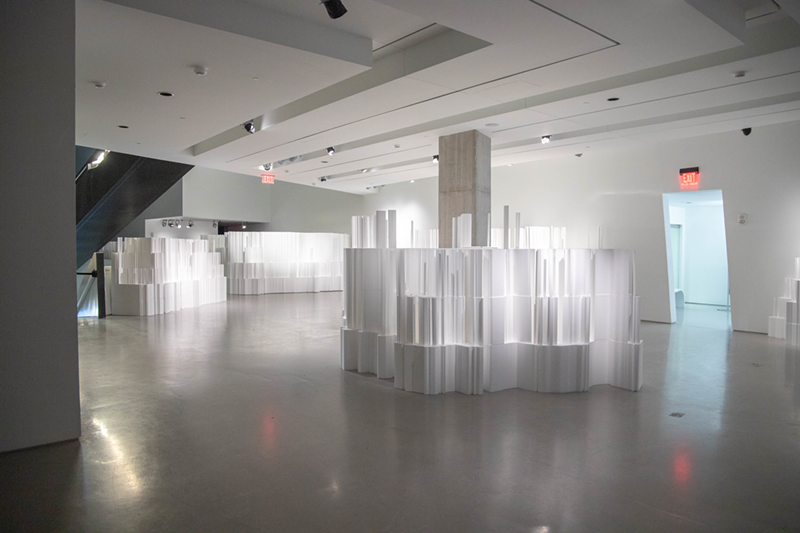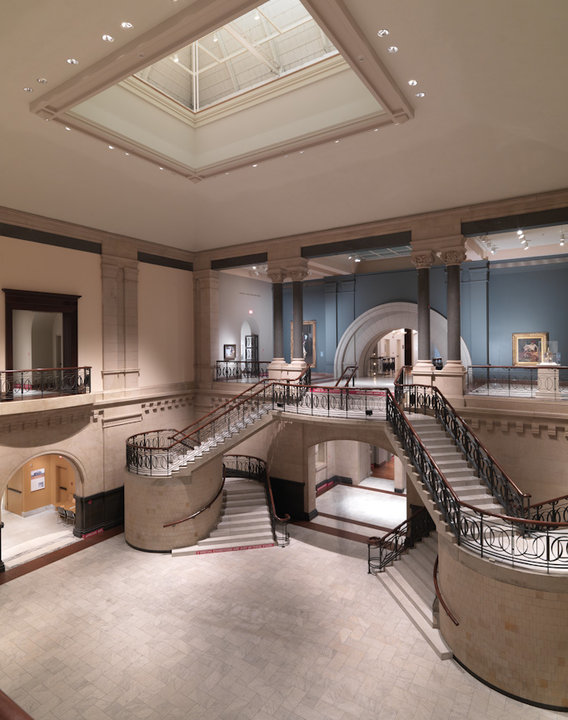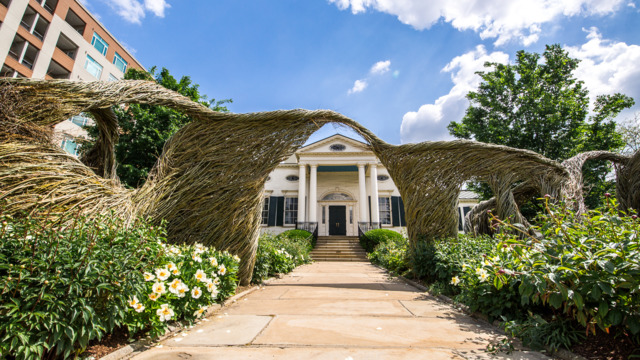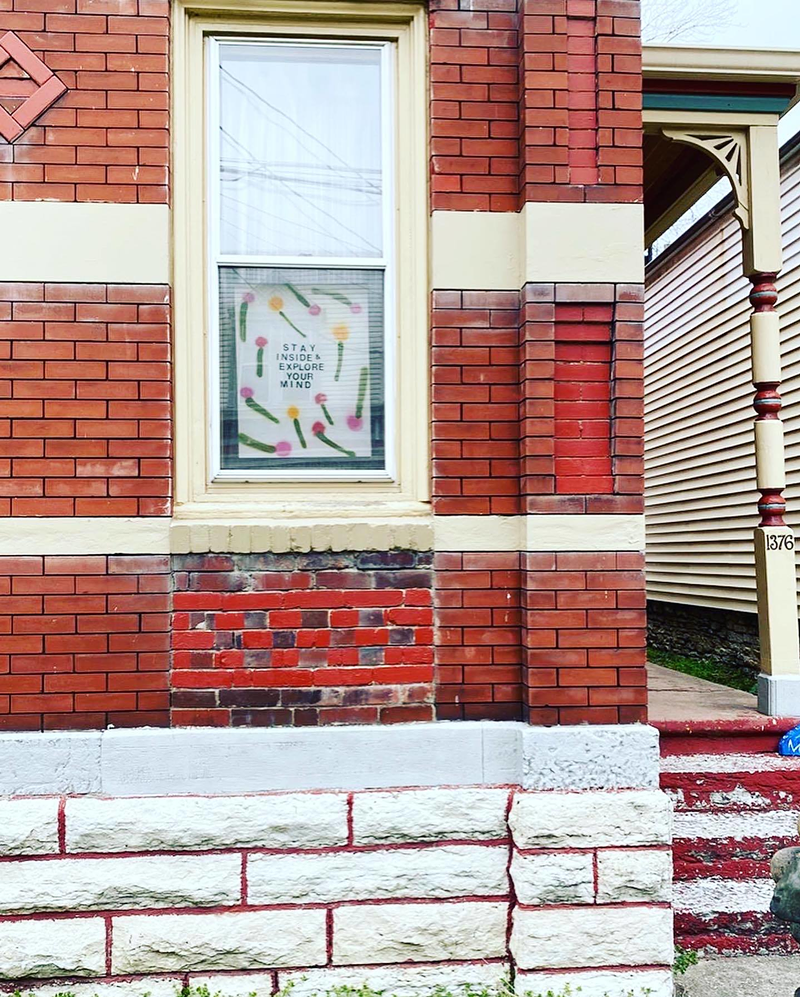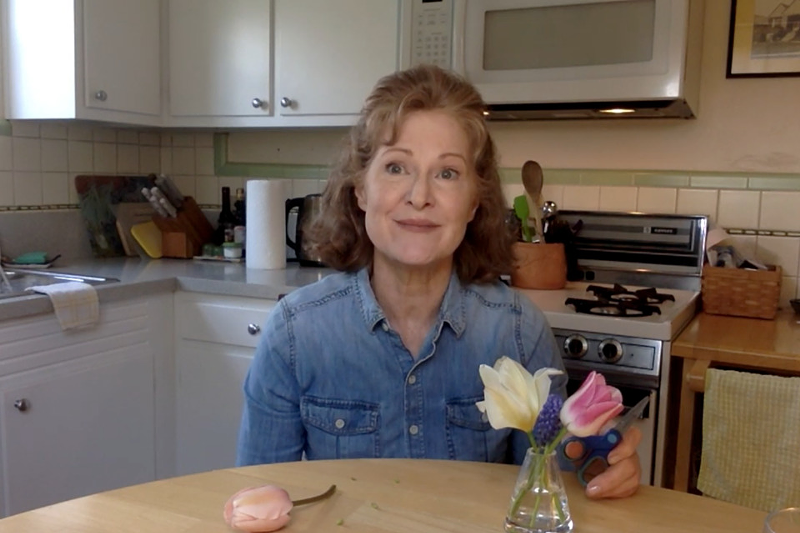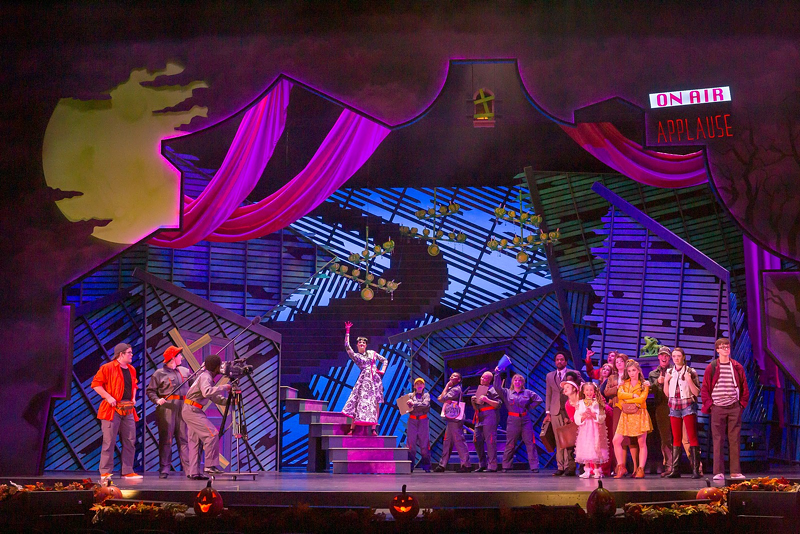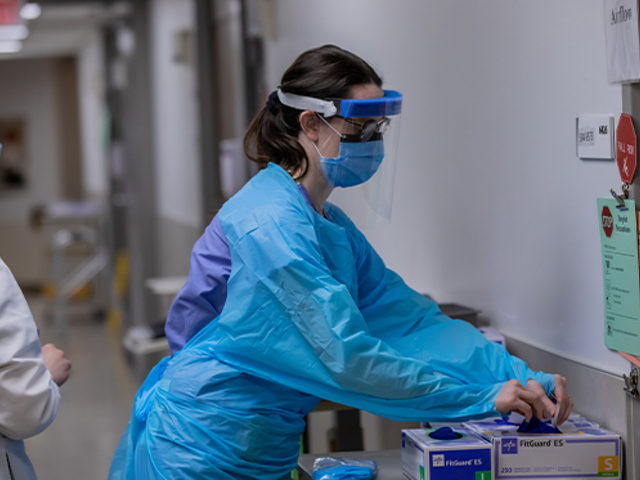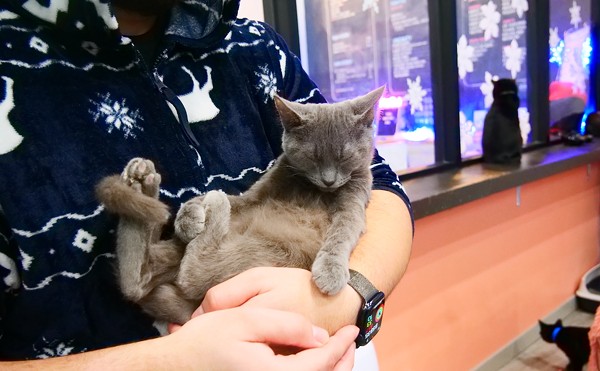Museums are closed. Performances and art openings are canceled or postponed, sometimes indefinitely. Season announcements have been pushed back. Students are finishing their semesters remotely.
It is a surreal but temporary truth; spaces that serve to share art — galleries, theaters, museums, studios, stages — are now virtually empty in the age of social distancing. Much of this work thrives through the act of togetherness. These are necessary precautions, but the collective grief is real nonetheless.
In normal times, we stroll through galleries; we watch performances unfold live, experiencing stories and movements and emotion as a group; we fill theaters, concert venues and museum halls; we gather to create, learn from each other and ultimately better our community. For such organizations, these changes mean a significant loss of revenue. For many artists — and workers — this has meant layoffs, lost income and disappearing gigs.
Adding to the uncertainty, there is no definite answer as to when life might return to normalcy.
But I caught up with leadership at local arts organizations via email and here is how they say Cincinnatians can best uplift the city’s artists and creatives.
The Impact
According to statistics from Americans for the Arts, 60 percent of earned income for nonprofit arts organizations comes directly from ticket sales, sponsorships and fundraising events. And they say the nonprofit arts alone have a $166 billion economic impact in the United States and support 4.6 million jobs. Many small artists rely on sales from gallery shows, fairs and fests to sustain and may not have a viable financial fallback. As is the case with other sectors, many live paycheck to paycheck, gig to gig.
Like other economic sectors, arts organizations have called for federal aid as they grapple with their own set of crises. According to The New York Times, the $2.2 trillion federal coronavirus relief bill, or CARES Act, includes $75 million for the National Endowment for the Arts and another $75 million for the National Endowment for the Humanities, both of which would dole the money out to institutions across America that need it. Additionally, $50 million was set aside for the Institute of Museum and Library Services, $25 million for the Kennedy Center and $7.5 million for the Smithsonian Institution. (The bill also includes a one-time payment of up to $1,200 to be sent to the majority of Americans, alongside loans, grants and tax breaks to large and small businesses alike, as well as supplemental funding to local and state governments to aid in emergency and basic services.)
These numbers fall short of what arts and culture-related organizations called for. In a letter, the American Alliance of Museums urged the U.S. Congress to allow “at least $4 billion for nonprofit museums in COVID-19 economic relief legislation to provide emergency assistance through June.” They cited that museums are losing “at least $33 million a day due to closures” as a result of the novel coronavirus “and will be in desperate need of significant federal support to maintain jobs, secure our cultural heritage, help to rebuild our nation’s tourism industry — and simply to survive the months to come.”
In comparison, England launched a £160 million (or $190 million) emergency relief package for creative organizations/artists. The deal included an allotted £20 million for individual and freelance artists. According to a press release, Germany’s government is putting forth €50 billion ($54 billion) in relief coverage for its creative and cultural sectors. It also specifically includes aid for self-employed individuals and small businesses.
Kim Flora, the Cincinnati Art Museum’s head of design and installation and a local artist, said the support of working artists right now is not only critical to individuals, but also to the greater community.
“Many artists currently work in the gig economy of designing, sculpting, painting, art handling and often bartending and pouring coffee to make ends meet,” Flora said. “Artists are getting hit from multiple angles as art institutions and restaurants close their doors.
“It’s important that the community embrace and support artists during this trying time so that families and individuals can share in the basic necessities important to life. It is impossible for creative work to continue without these things.”
Jen Cox, the Contemporary Arts Center’s director of communications, stated that working artists often rely on support from individual patrons and commissions from institutions or grants. The power of choice to show support for those in our communities, then, is a vital one.
“It’s the power we still have in the face of lack of control over our other circumstances,” Cox said. “The very work our artists do is at the same time a commentary on the world we live in, a call to action, and a recognition of the connections we all have with each other. We need them now, more than ever. And we’ll need them again once we’ve come through this global crisis to help us bring sense to the new world we live in.”
As put by Cal Cullen, the executive director of Wave Pool, artists connect us emotionally and bring out the best in humanity. She said that they are perhaps the most capable of finding ways “for us to combat the negative societal implications of this (pandemic).” As previously noted, artists make up a large sum of the gig economy — contract work, adjunct teaching, etc. — making them particularly vulnerable to these blows. But the impact of COVID-19 is not only a financial one.
“It’s devastating to see artists who have worked for months or even years to put on exhibitions, performances and programs to see them suddenly canceled,” Cullen said. “This is not only a monetary concern for artists but a heartbreaking one, after having put so much time and resources into work that is now not being seen.”
So how can communities support their local network of artists? For starters, buy work from artists. Many sell their art directly on Instagram or other sites such as Etsy. Commission pieces. Become a member of art organizations. Buy tickets in advance. Donate. Share their work on your own social media. Advocate for better funding.
Several of those interviewed pointed to local nonprofit agency ArtsWave, which funds over 100 art projects and organizations in Greater Cincinnati. Currently in the midst of its community campaign, ArtsWave has also put together an extensive online “toolkit” that pools local, statewide and national resources for artists and organizations in the wake of the novel coronavirus. It can be found at artswave.org.
Going Digital
Another trend has emerged. In the age of social distancing, entertainment has largely gone digital. If you’ve scrolled through Instagram, Facebook or Twitter in the past month, you’ve likely noticed links to live-streams of performances or videos taking viewers on tours through would-be art shows. Several cultural institutions have rolled out such initiatives. The list could go on and on, but here a few to get you started:
You can still explore the Cincinnati Art Museum via online exhibitions, which include Rembrandt: Master Printmaker, Frida Kahlo: Photographic Portraits by Bernard Silberstein, The Art Academy of Cincinnati and World War 1 and Mementos of Affection, a collection of ornamental hairwork. Still missing the CAM? They also have a virtual collection of works and objects. To check any of the above out, visit cincinnatiartmuseum.org.
In a similar vein, the Taft Museum of Art has rolled out cyberspace programming. Museumgoers can take an audio tour of their permanent collection. On Mondays, the museum has partnered with Urban Sketchers for a weekly creative prompt inspired by the Taft’s collections and architecture. Participants can share their art via #TaftMuseumDiscovered, a recently unveiled hashtag being used to spotlight works from the museum. If you have not yet had a chance to see their current exhibition N.C. Wyeth: New Perspectives — or if you just really love it — Ann Glasscock, assistant curator, is joining Elise Solomon, the director of learning and engagement, for a virtual table-side chat regarding the show. On Fridays, test your knowledge via trivia and tune in on Sunday for family-friendly activities led by the Taft’s learning and engagement team.
Be led through the Contemporary Arts Center via an audio tour at tourcac.com. Created by local artist Britni Bicknaver, it’s highly descriptive, lush with intricate sound and full of historical information about the space. Close your eyes and you might just begin to see the familiar curves of the iconic Zaha Hadid-designed building develop. Cincinnati-based artist Julia Lipovsky is also at the helm of a “virtual residency.” Keep tabs on the center’s social media for weekly creative prompts. So far, viewers have joined Lipovsky on making self-portraits and window posters.
Wave Pool has created a COVIDeo YouTube channel where they are hosting and live-streaming all major gallery events and exhibit openings. Visit their Instagram stories for studio tours and updates.
Get your dose of Know Theatre through Know-to-Go, their online streaming programming series. Though their mainstage show Alabaster was cut short, the company was able to bring the award-winning, goat-narrated drama to the digital landscape. Tickets for that show are no longer for sale, but Know is pulling past shows from the vault and making them available for rent at $10 apiece. Titles include 2015’s Andy’s House of [blank] (through April 24) and 2016’s Darkest Night at the Gnarly Stump (through May 9). According to a release, Know is also partnering with local playwrights to create new audio works that will be made available for purchase at knowtheatre.com. Also on deck is the brainchild of managing director Jackson Short. Billed as a “designed-for-performance tabletop role-playing-game experience,” Roll Models will feature the stories of local playwrights with local actors performing various characters, who will spin their tales in live-streamed installments. Audiences are encouraged to support the art through a “virtual tip jar.”
In a similar move, Cincinnati Playhouse in the Park announced that they have commissioned 10 local playwrights to write monologues about hope; each will be posted online, so keep your eyes peeled. Ensemble Theatre Cincinnati has also been sharing audition tips on Facebook/Instagram from Producing Artistic Director D. Lynn Meyers. Also on the virtual deck is Becca Howell, ETC’s education associate, who will give yoga tips every Sunday. Open another tab for Cincinnati Shakespeare Company’s “Virtual Happy Hour,” held weekly on Thursdays at 5 p.m.
Alongside moving to remote classes, the Art Academy of Cincinnati will be sharing recorded senior thesis talks and 3D virtual walking tours of exhibitions. When asked about the importance of supporting working artists amid this pandemic, Amanda Parker-Wolery, AAC’s director of marketing and enrollment, said the college believes that culture and creativity is a motivating factor in the overall global creative economy. “One of the things that is lost in the current situation is that many exhibitions of artists are being canceled or postponed at this time which leads to a dramatic reduction of economic support surrounding the presentation of artwork,” she said. “Understanding the need to support working artists at this time is essential to continue the community experience of making this world a better place.”
Miss movie theaters? Catch flicks at Cincinnati World Cinema via their current lineup of rentals: Slay the Dragon, Corpus Christi, The Whistlers and Once We Were Brothers.
Need to keep the kids entertained? Cincinnati Museum Center has a slew of educational online resources — including videos, how-to experimental guides, activities and more — that bring the museum’s spirit straight into your home. You can also watch Casper: The Friendly Musical for free on The Children’s Theatre of Cincinnati’s YouTube.
Resources for artists
Artists are undoubtedly helping us get through this pandemic. From TV to film to living room concerts to virtual workshops — this is the work that is helping so many cope mentally and emotionally with a new reality.
And that’s why, now more than ever, communities need to uplift and support makers. In doing so, they can have the tools necessary to be actively creating long after COVID-19 has passed.
While this list is in no way exhaustive, below are resources that may be useful to creatives. Like the rest of us, the art world is still figuring out how best to approach these unprecedented circumstances, so websites and organizations are constantly evolving.
- On April 8, the nationwide Artist Relief was launched, which aims to provide “rapid, unrestricted $5,000 relief grants to assist artists facing dire financial emergencies due to the impact of COVID-19,” according to its release statement. The national partnership between the Academy of American Poets, Artadia, Creative Capital, Foundation for Contemporary Arts, MAP Fund, National YoungArts Foundation and United States Artists has $10 million to start. Artists can apply for grants at artistrelief.org.
- Wave Pool has developed an artists’ professional development program titled “Driving Lessons,” which comes in response to the Cincinnati Artist Report they compiled last summer. Described as a course “to assist local artists with building their résumés, brand, grant-writing skills, strategic plans and financial management,” classes are set to launch virtually in May. The gallery’s Cullen also noted that the podcast I Like Your Work is currently featuring artists who have had their shows canceled because of COVID-19. (Follow their Instagram @ilikeyourworkpodcast.)
- A GoFundMe started by Ian Timothy Forsgren titled the “Greater Cincinnati Artist Relief Fund” has raised more than $7,000 since March 13 toward a total goal of $20,000. “We’re a diverse group of low-income artists in Cincinnati raising money to support other artists and freelancers like us who are taking financial hits as a result of closures and lost income from COVID-19,” reads the fund’s description. “Our intention is to collectively raise funds to provide emergency and preventative resources to those at financial risk.” The funds will go directly to artists to make up for lost income, canceled gigs, etc.
- Americans for the Arts has created a list of emergency relief funds/financial assistance and is currently taking an “impact survey” to gather data and stories that “will demonstrate how the arts and culture workers triumphed and survived this crisis.”
- Sarah Crowell, an AAC alum and former adjunct professor, created a GoFundMe to help pay figure models who now find themselves suddenly out of work.
- Artiststhrive.org is a compilation of resources, tools and opportunities with the goal of staying true to its namesake: providing support to artists and those who work with artists so that they are able to thrive amid this pandemic.
- Covid19freelanceartistresource.wordpress.com is a website dedicated to freelance artists and those who want to support independent artists. They have aggregated a list of free resources, opportunities and financial relief options. Their online “COVID-19 Toolkit” has compiled both local and national resources.
- New York-based nonprofit Creative Capital is providing grants, workshops and more to support creatives during COVID-19.
- Looking ahead, Covington’s Pique recently put out a call to artists to submit work made during the COVID-19 pandemic. Aptly named the Quarantine Show, all media and styles are welcome. Date TBD.
Per the CAC’s Cox, artists are also at the forefront of tackling unique issues. She cited QuaratineChat — a project that connects isolated strangers via a phone line — as an example of a platform created by artists. (In this case, Danielle Baskin and Max Hawkins.)
As Lindsey Whittle of Covington’s Pique gallery told me: “We need art always.”

